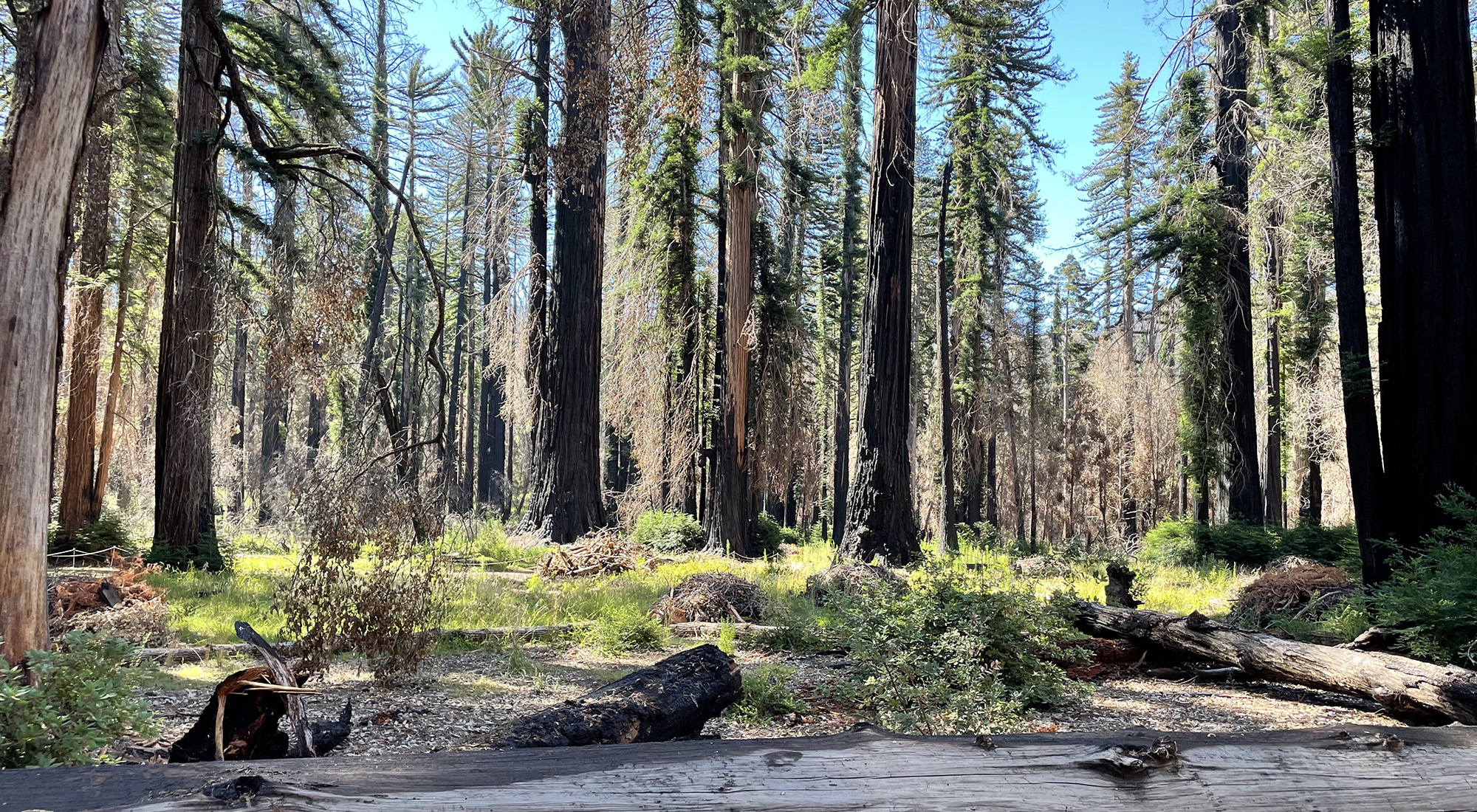
Amazingly, within just a few short weeks of the extreme 2020 CZU Lightning Complex fire, redwoods began to push out new lime green sprouts from their charred branches and trunks. This was a hopeful sign that many of the trees had survived the hottest and most damaging fire at Big Basin in its recorded history.
Coast redwood forests are highly adapted to fire, but this 135-square-mile wildfire—more than twice the area of San Francisco—was a new phenomenon. Intensified by drought, rising temperatures, other effects of climate change and past fire suppression management, the wildfire caused extensive damage to parks and communities in the Santa Cruz Mountains.
Since 2020, redwoods and other plants have resprouted vigorously, and ongoing forest management is underway to improve forest health, recovery, and resilience.
California State Parks, Save the Redwoods League, Parks California, Auten Resource Consulting, and a broad coalition of partners have been working to restore the forest and help ensure it is resilient to climate change and future wildfire. Together, they’re bringing decades of science-based restoration knowledge to the region.
Restoration projects are happening now throughout the Santa Cruz Mountains at Big Basin, Año Nuevo, and Butano state parks—all of which were in the path of the CZU Fire.
With so much of the redwood tree canopy still regrowing, the parks are sunny, dry, and warm.
Densely growing native grasses and shrubs cover the forest floor, and while this growth is an indication of the health of the understory, other plants, such as Douglas-fir trees, will take decades to regain their place in the forest canopy.
The CZU Fire also left behind standing dead trees and dead tree limbs throughout the forest. These not only pose a risk to visitors when they fall, but they are also fuel for another fire. Combined with the vigorously growing grasses and shrubs, there’s an overabundance of combustible material accumulating in the forest that could feed another devastating wildfire and threaten the survival of old-growth redwood stands.
The proactive restoration work aims to reduce the amount of fuel and improve forest resilience.
The restoration program is designed to improve forest health and help ensure the forest is resilient to climate change and future wildfire.
Objectives:
The restoration of this forest requires using science-based techniques:
California State Parks, Save the Redwoods League, Parks California, and Auten Resource Consulting have completed field work and data gathering; synthesized data; and prepared a forest management strategy in the following phases:
Photos of the coast redwood tree canopy at Big Basin Redwoods State Park, showing the effects of the CZU Fire in May 2021 (left) and the regrowth as of November 2023 (right). Photos provided by the PhenoCam Network. phenocam.nau.edu
While much of Big Basin Redwoods State Park continues to recover and remains closed to the public, California State Parks and its partners are working to re-establish safe access to trails and evocative nature experiences.
Plan your next visit and see the forest’s recovery up close.
Join our mailing list to keep up with changes at Big Basin Redwoods State Park.
Join our mailing list to keep up with changes at Big Basin Redwoods State Park.